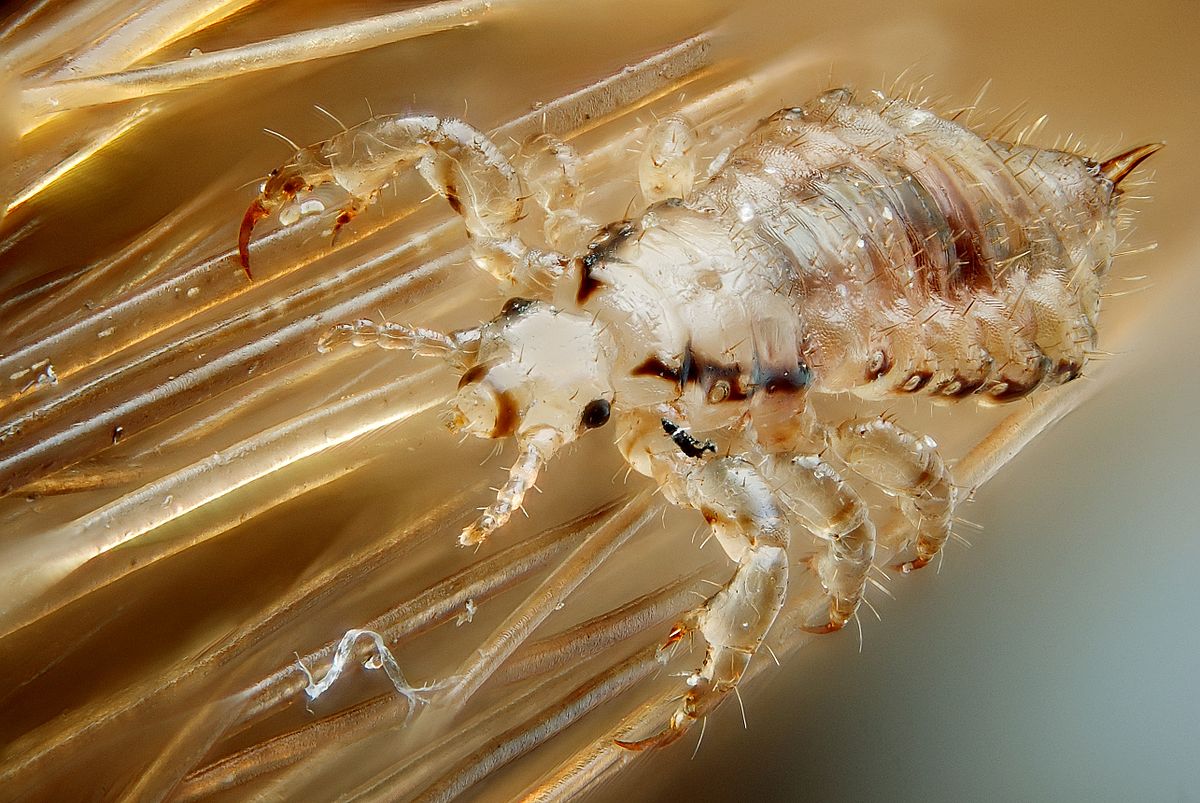
The louse is a human parasitic insect about 2 to 4 millimeters in size, which grows in the hair and is very contagious. Contrary to what one might think, the louse does not jump and knows how to fly. You will only get lice if your hair touches the hair of an infected person or if it comes in contact with a contaminated object (comb, pillow, clothing). While they often lead to itching, they can sometimes go completely unnoticed, which is why it's essential to check your child's hair regularly.
The louse, the most feared insect of mothers, is no longer very young. Lice eggs have been found in the hair of a body dating from 9,000 years ago!
The Eskimos, as well as the Amerindians, once tasted it as a dish. Not very tasty, we grant you that! At the beginning of the 19th century, having lice-infested hair was not a problem and even represented a mark of nobility, Louis XIV swarming with lice under his wig. Lice were considered to be natural secretions of the human body capable of curing certain diseases. It was not until the 1850s, with the appearance of insecticides, that the parasite lost its letters of nobility, falling from its golden shoulders. From the high society to the neglected hair of the poor peasants, they were then associated with misery and filth.
Today less considered an index of questionable hygiene than the contagious disease; lice particularly appreciate the soft hair of children. How many times during the school year have you found yourself in the grip of collective contagion? You don't count anymore.
You can buy the products needed to remove headlice from your local pharmacy or from an internet online pharmacy such as XLPharmacy which can help you rid your dear child's hair of these nasty lice in ten steps.
Go around your child's hair meticulously and regularly to check that he has not been affected by this scourge of schoolchildren. You can use specific lice combs to see the extent of the damage. With their ultra-thin and close teeth, they will allow you to capture some of the lice installed in your child's hair and sound the alarm bell.
Nothing could be more accessible and so effective! A simple elastic could well save you many problems. If a rumor of contagion spreads on the school grounds, warn before healing and make your little girl a pretty braid or a tiny bun (a headband will be the perfect finish) ). Lice will be less likely to settle there. The same goes for you if you don't want them to relax in your freshly brushed hair (don't think you're spared, lice can do very well in adult hair). For the boys, it will be more difficult. Even if they have short hair, they are not immune either. Explain to your child how lice are transmitted so that he does not go and rub his neighbor's head.
Avoid swapping your brushes, hats, and other hair accessories. Ditto for your child. Explain to her that it is important not to lend her hat, scarf, or headband, even to her best friend. Keep your belongings to yourself, as generous as you are. Lice will have a more challenging time coming to visit you.
Hair that is too long will be more likely to be invaded. Why not prevent the attack by taking your child to the hairdresser? A new cup will not be a luxury to fight against the enemy. However, do not shave your little boy, it will traumatize him, and the zero ball does not guarantee to be spared from these hungry parasites.
Is your child infested? Nothing to be embarrassed about; it even happens to the top of the class. Notify the schoolteacher so that everyone can take the necessary precautions to prevent the spread.
Pick a day of the week to treat all the heads of the family with resistant lice. Ideally, they would all be verified. Indeed, an untreated head can transmit lice again to its surroundings, and the whole procedure will then have to be redone.
Does your child come home from school with infested hair? To prevent lice from spreading to the rest of the family, be vigilant about the cleanliness of your home. Do not neglect any room: carefully disinfect floors, rugs, sofas, and armchairs, and comb through your child's objects (brushes and combs, toys and soft toys, sheets and clothes, etc.), not to mention the seats in your Car. Vacuum regularly to prevent them from settling in. Work, of course, but not in vain.
Wash your child's hair thoroughly if you, unfortunately, notice that it has been contaminated. Specific shampoos are sold in pharmacies, do not hesitate to ask for advice (do not be afraid, we will not run away from you like the plague). Some lice combs can effectively eliminate these unpleasant parasites. Alternative to chemicals, the new generation combs are electric, having the effect of removing lice by electrocution, harmless for your child—an ultra-effective means from across the Channel, still very little known in France.
A solution that is not very fragrant but very effective. At the time, olive oil was used in children's hair to suffocate lice. If you are a fan of homemade solutions, you can try disinfecting your toddler's hair with white vinegar, to be applied as a mask, under transparent cling film. You can reproduce the process with argan oil, which is slightly less oily for the hair. You can also spray a suitable repellent spray (lavender essential oil seems to work well) on your toddler's hair before he goes to face the army of lice that awaits him firmly at school.
Do not panic at the slightest assault of these nasty beasts; it is not an incurable disease. To crush the opponent, you will need to be cool! Take a deep breath, and go on the attack.